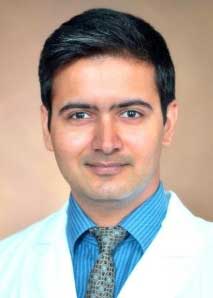What It’s Like to Be a Postgraduate Trainee in a Pandemic
By: Enambir Josan, MD
March 2, 2021
The COVID-19 pandemic has shaken the health care system to its core and has highlighted the shortcomings of hospitals all over the world. The widespread adaptation of digital education that ensued has helped students continue with some normality. However, these changes have impacted the process of moving from studying medicine to practicing medicine for physicians-in-training in some peculiar ways.
Tangential Training
Residents and fellows played a pivotal role in the health care response to the COVID-19 pandemic while acquiring the training they needed for independent practice. Trainees provided a quick and accessible reservoir of physicians. Some residents and fellows near the end of their training graduated early to fill the gap of physician shortages. Some subspecialty fellows had to practice independently in their core discipline of medicine, while others had to provide critical care outside of their training expectations.
The time spent providing this care, however, doesn’t necessarily equate to the training requirements and experiences needed for one’s specialty. Even for the pulmonary and critical care trainees who were at the forefront of providing COVID-19-related critical care, their education still required adequate exposure to outpatient and inpatient pulmonary medicine. In addition, the pandemic has accelerated the shift toward telemedicine. Although remote management is necessary to provide safe and timely care while preserving hospital resources, it does take away the learning experiences of face-to-face encounters.
Remote Learning Isn’t Always Protected Learning
Didactic teaching is an important element of postgraduate training. It consolidates vast sums of information into an audiovisual format with the aim of engaging the learner through real-time discussion. Now, here are two scenarios: The first is attending grand rounds in person with everyone sitting quietly and focused on the speaker. The second is logging in to the same conference remotely in a shared work room with constant interruptions from your colleagues or the temptation of multitasking under the pretense of saving time. Which of these is more likely to be effective?
We have embraced socially distanced learning as a tool to improve conference attendance in the wake of a pandemic. However, the format of teaching needs to adapt in order to keep the learner engaged. This requires changing a one-way presentation to an interactive, Q&A-based learning format for improved audience engagement. I recently started integrating polling software into my presentations to make them more interactive and fun. In addition, protected time for learning is vital for trainees (because let’s be honest, when have you ever had time to view the recording of that lecture you missed last Friday?).
Missed Opportunities
Early in the pandemic, there was a general consensus to limit unnecessary exposure to patients with COVID-19. If one physician can do the task, why expose two? This necessary precaution did take away some hands-on procedural training for certain trainees. If there is a need for a central line, the fellow steps in instead of supervising a resident. If the same patient needs to be intubated, the anesthesiologist steps in instead of the fellow. Interruptions in elective, yet highly aerosolizing procedures, such as bronchoscopy, have definitely impacted the training in pulmonary and critical care fellowships nationwide. Some fellows are having difficulty maintaining the projected minimum requirements before graduation.
Despite these challenges, trainees across the nation have shown resilience in the face of uncertainty due to the overwhelming support from their mentors. Fellows at my institution are actively involved in all division meetings related to COVID-19 preparedness. Any changes to the schedule are scrutinized by both faculty and fellows. Involving the trainees in response preparedness ensures that their goals of training are adequately met.
While the pandemic can be seen as a source of disruption for the education of trainees in medicine, it might also be viewed as a catalyst for transformation. The new workforce being trained will be adaptable to both traditional medicine and telemedicine. They will be competent in providing critical care—and I mean the real critical care—to very sick patients. This generation of physicians has been involved in policy making and response management. They are learning the art of administration by choice or necessity. As the saying goes, “Hard times create strong leaders.”
 Enambir Josan, MD, is the Chief Fellow for the Division of Pulmonary, Critical Care, and Sleep Medicine at Case Western Reserve University/MetroHealth program in Cleveland, Ohio. He is a member of CHEST’s Trainee Work Group and his clinical interests include interventional pulmonology, lung cancer, and medical critical care.
Enambir Josan, MD, is the Chief Fellow for the Division of Pulmonary, Critical Care, and Sleep Medicine at Case Western Reserve University/MetroHealth program in Cleveland, Ohio. He is a member of CHEST’s Trainee Work Group and his clinical interests include interventional pulmonology, lung cancer, and medical critical care.